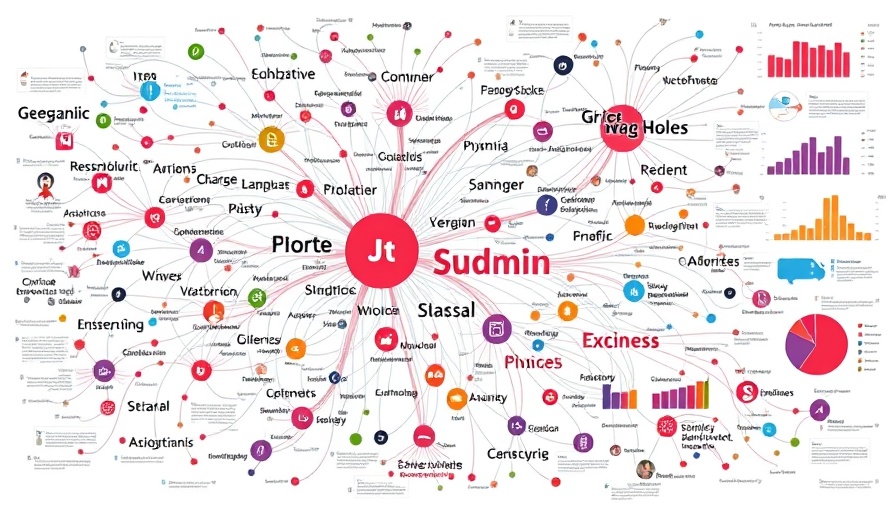
Understanding the Significance of Living Alone Among Older Adults
The increasing global trend of older adults living alone is reshaping not only personal living arrangements but also healthcare responses and research initiatives. This demographic shift raises essential questions about the well-being and safety of individuals who find themselves without daily contact with family or caregivers. The recent bibliometric analysis highlights that over 740 studies have been conducted on this subject, revealing not just the rising prevalence but also emphasizing the urgent need to prioritize comprehensive care strategies and support systems for seniors.
Measuring Trends in Research: Insights from Recent Analyses
As highlighted in the bibliometric study, South Korea and China are leading contributors to research on older adults living alone, indicating regional focuses in the global discourse. The surge of relevant publications, especially with the integration of cutting-edge technologies such as artificial intelligence and spatial recognition, points towards innovative methodologies aimed at enhancing the safety and quality of life for elderly individuals. Understanding these trends is paramount as they represent the frontier of aging research.
Innovations in Care Technology: A Future-Focused Perspective
Technological advancements are increasingly becoming vital in addressing the challenges faced by older adults living alone. The utilization of AI in personal care settings offers intriguing possibilities for proactive safety measures and tailored health interventions. For instance, the integration of smart home technologies that detect falls or changes in daily routines is paving the way for supportive living environments that allow seniors to maintain independence while ensuring their safety. This innovative landscape is pivotal for researchers and care providers alike to harness effectively.
What This Means for Healthcare Providers and Policymakers
The implications of these findings tied to older adults living alone extend beyond academic discourse. Healthcare providers, policymakers, and caregiving organizations must adapt to these insights by developing robust frameworks that incorporate technology and evidence-based practices. This will not only support the growing elderly population but also secure healthier aging outcomes. Policy interventions should consider funding models that support the integration of technology in elder care, ensuring a collaborative approach to care.
Connecting the Dots: Psychological and Emotional Dynamics
Living alone can often have significant psychological repercussions for older adults, including feelings of loneliness and isolation, which are crucial to understand in the context of this demographic. Research suggests that addressing these emotional needs through community building and social programs can counterbalance the pressures of solitary living. Building connections and fostering environments that encourage participation can greatly enhance mental well-being, presenting an area ripe for research expansion.
The Role of Telomere Biology in Aging
Linking into the broader context of aging, telomere biology offers intriguing insights into the well-being of older adults. Telomeres, the protective caps at the ends of chromosomes, shorten as cells divide, leading to aging and increased susceptibility to age-related diseases. Therefore, understanding and potentially manipulating telomere length through lifestyle choices and scientific interventions could play a revolutionary role in enhancing the quality of life for seniors. Recent studies suggest that telomerase activation and the incorporation of telomere-lengthening supplements could offer promising avenues in extending healthy lifespans.
Conclusions and Future Directions
The comprehensive bibliometric analysis of older adults living alone delivers compelling insights into the evolving landscape of geriatric caregiving and research. As the global population of individuals aged 65 and older continues to soar, it is imperative that we address the multifaceted challenges these individuals face. From integrating advanced technologies to focusing on the psychological impacts of living alone and considering the biological aspects tied to aging, a holistic approach is warranted to ensure not only longevity but also enhanced quality of life.
Understanding these critical dimensions empowers stakeholders and communities to develop better frameworks to cater to the increasing needs of our aging population. By leveraging technology, nurturing social connections, and exploring biological advancements in telomere research, we can foster an environment that maximizes health and well-being for older adults. In light of these insights, we encourage health-conscious individuals seeking comprehensive strategies for aging gracefully and optimally to further engage with ongoing research initiatives. Together, we can contribute to a future where aging is marked not just by longevity but by quality and vitality.
 Add Row
Add Row  Add
Add 




Write A Comment